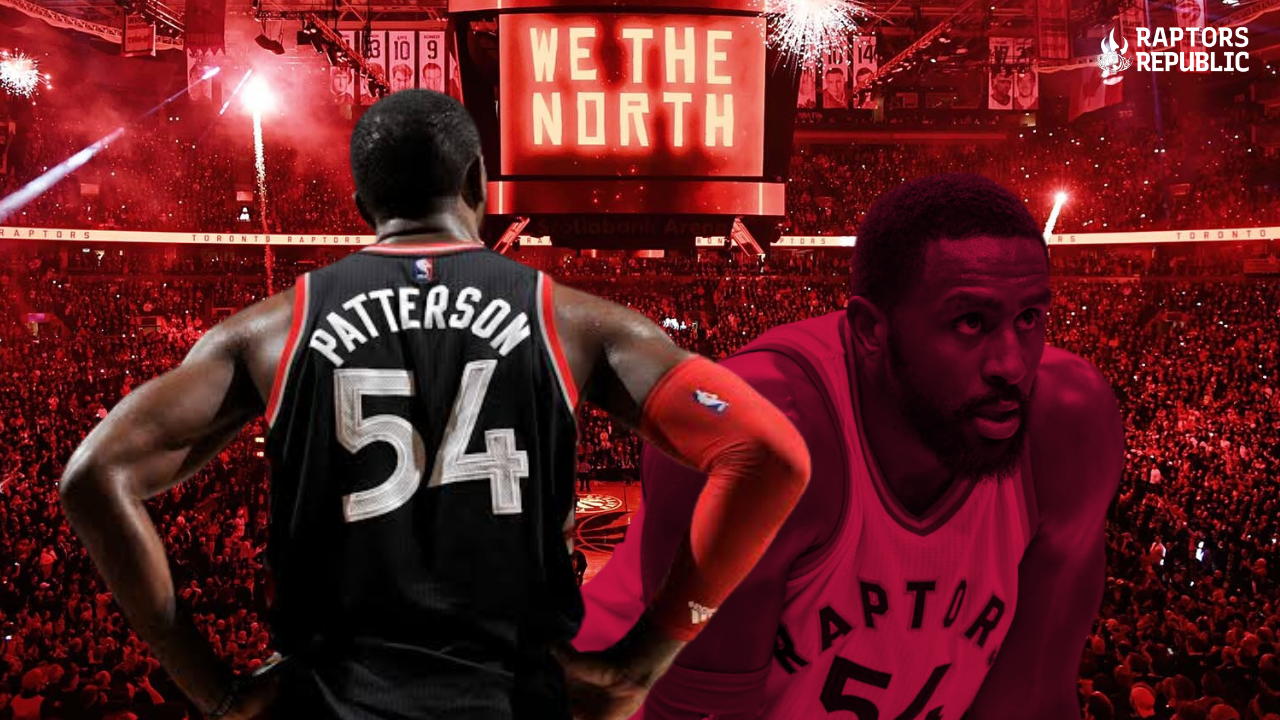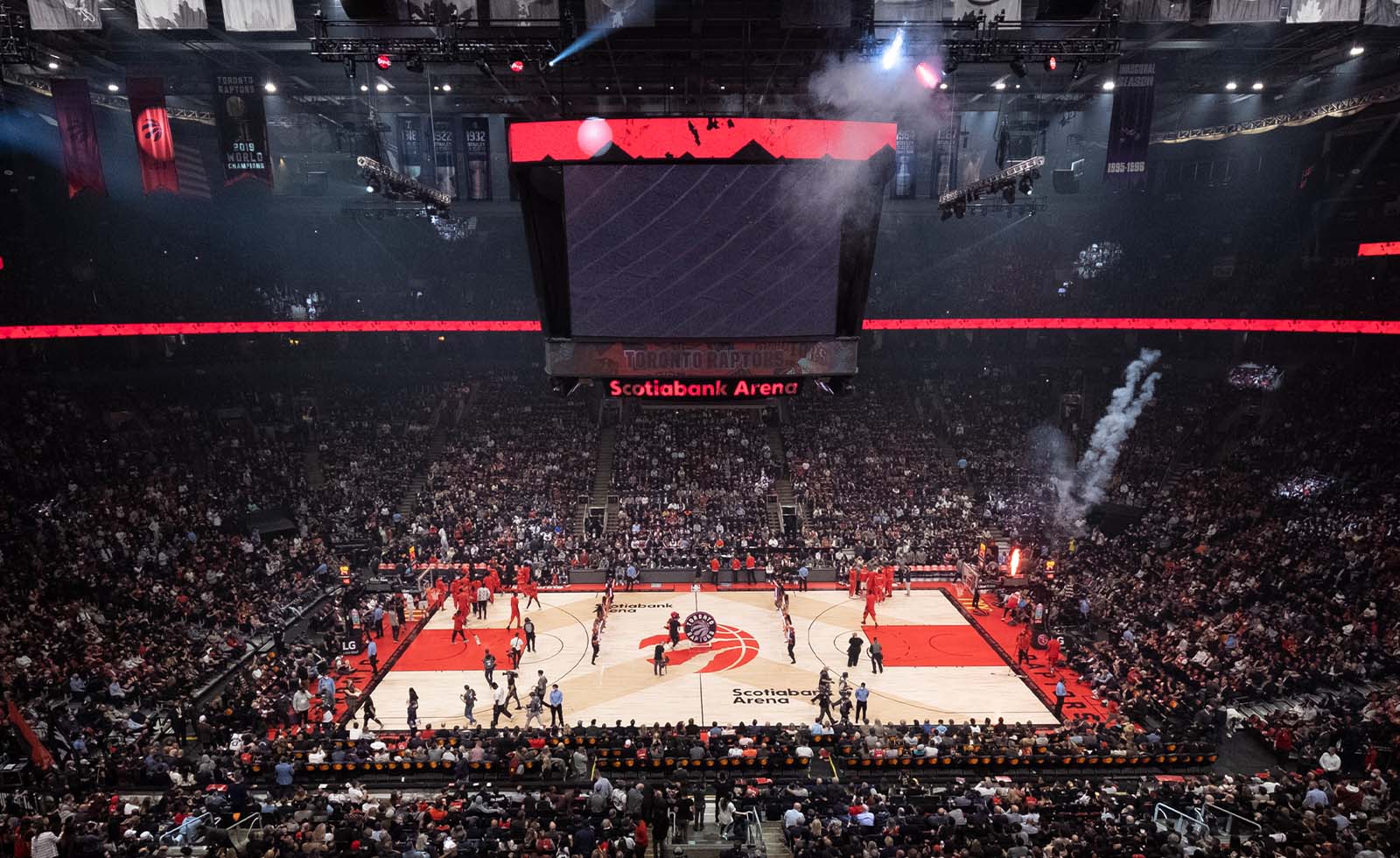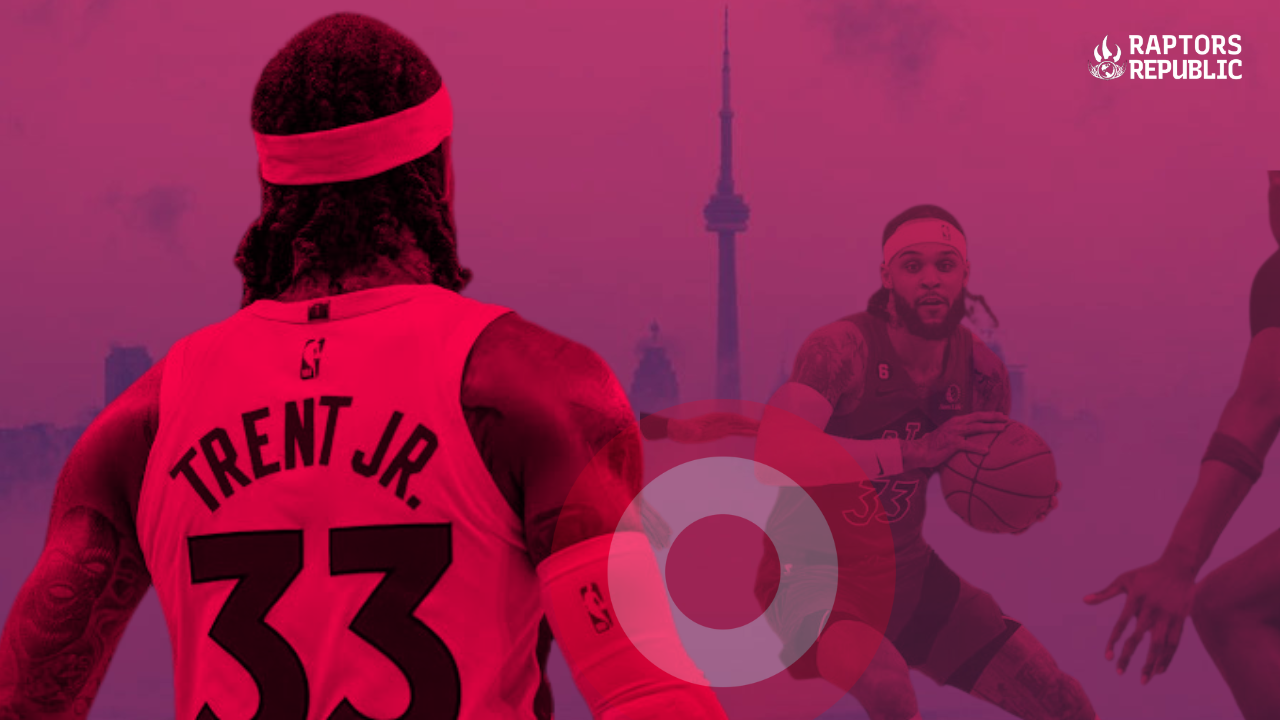Over the course of the past decade, the Raptors have housed All-Stars, All-NBAers, future hall-of-famers, and Finals MVP’s. For one of the most impressive and successful teams of the past decade, that should be no surprise, but neither should all of the successful years of journeymen, second draftees, and G-Leaguers. The Raptors permeated success, winning minutes, and sky high net ratings throughout their magical decade.
Cory Joseph’s magical first year, Bismack Biyombo’s run towards a huge payday, Fred VanVleet’s trudge out of the G-League, and Rondae Hollis-Jefferson’s do-it-all year of defense, laydowns, and odd finishes – all preceded by Patrick Patterson, the winner of minutes.
While he was with Toronto, Patterson played 273 games — starting 19 of them, but many people wanted more considering the Raptors never-ending search for a competent power forward in-between Chris Bosh & Pascal Siakam — and averaging 7.6ppg, 4.8rpg, 1.4apg, and 1.2 stocks per game. Could hedge pretty hard in pick n’ rolls, played fairly good rotational defense, and played his part where he could. A decent enough bench big. The question is: How did a decent bench big leave Toronto with a plus-minus of +851 across across 273 games.
Thinking back to those Raptors, what they were known for, the first answer has to be: he played a lot of minutes with Kyle Lowry. But, get this, he didn’t have a single season where he was a negative with Lowry off the floor, and even put up big, positive numbers most years. Take the Greivis Vasquez – Lou Williams – James Johnson – Patrick Patterson – Tyler Hansbrough lineup, for example. They completely mashed opposing teams (+17.5 points per 100 possessions, 87th-percentile leaguewide) and did so while carrying three well below-average defenders. This isn’t to say that Patterson was carrying these lineups, but that he had the skillset to mesh perfectly well alongside elite starters and could scale up a little bit in usage to help lead well constructed bench lineups to winning minutes.
Patterson shot the 3 ball often, and did so at a slightly above-average clip (.373% as a Raptor). He was an elite short-roll shot maker, hitting 49-percent (154-313 from the short mid-range) in his time as a Raptor. An above-average long mid-range shooter at 42.7-percent (91-213) as a Raptor, and a below average rim finisher (never clearing 60-percent). He didn’t pass often, because he didn’t have the ball often, but his assist-to-usage ratio was always good. The ball rarely stuck in his hands, even if there wasn’t much creation. During his time with the Raptors, he hung around league average true-shooting, and never posted eye-popping statistics in any category. During the peak and tail end of Patterson’s elite bench big run, double-double monsters (Domantas Sabonis & Montrezl Harrell in 18-19, Tristan Thompson 14-15, Enes Freedom 15-16) were considered heavily for sixth man of the year honors.
In the formulaic offenses of the regular season, Patterson’s willingness to eat off the scrap heap on offense was everything. Overall, not really an efficient player. Sure, half his shots came from 3-point land and a lot were open, but he did outpace most bigs at that point in time (when every big man was trying and failing to become a stretch version of themselves). It was all the in-between stuff where he gave above-average returns, and his role as a spacer that benefitted other, efficient, offensive creators.
The ball in a big’s hands above the break is typically a very comfortable spot for the defense, but with a bit of motion, Patterson could make use of it. Move the ball on to Lowry for a three. Kind of a halcyon days thing, but: Patterson spacing ATB instead of the corner isn’t really done anymore. Nowadays, you’d start him in the corner and you might have him shake up above the break to get the weak-side moving, if at all. In these clips though, you can see the diversity of outcomes you could get from fairly rote offensive plays when Patterson touches the ball.
Basically: Patterson hit open threes that the offense created, was above-average in the mid-range where other players produce less, would constantly move the ball into other, better players hands; and despite not taking many shots at the rim, had a high-percentage of self-created looks there because he could worm to the basket in broken plays. For a guy playing next to stars like Lowry & DeRozan and the Raptors glut of burgeoning creators through the years? It’s perfection. In the playoffs, Patterson got a lot of criticism for his passiveness, but the 82-game regular season really is about maximizing the simple stuff and Patterson’s game was always tailored to that.
The ultimate helper on offense. Out there to support his teammates.
Patterson was also firmly in the camp of Master of None style defenders who would still provide positive returns year over year. Tweeners often emerge as valuable by doing a bunch of little things. Succeeding with a bit more mobility than bigs, providing a bit more roaming rim protection than a lot of wings, maybe a bit more rebounding. With Patterson? The rebounding wasn’t a big factor, but the extra bit of mobility, court awareness, and active hands helped his lineups force a lot of turnovers and force teams into more difficult shots on average. There’s no way to verify Patterson’s relation to this (outside of watching every possession for a decade, and I won’t be doing that), but if my memory serves me correctly, Patterson was better than a lot of 4’s on the perimeter and it doesn’t shock me that teams shot worse from downtown against Patterson lineups in 9 of his 11 NBA seasons.
Jonas Valanciunas gets sent up in a blitz (probably shouldn’t do that), and Patterson navigates the middle ground perfectly between pass and shot before blocking Felicio. And next, Biyombo gets to rotate down to Payne, and Patterson rotates over as the primary rim-protector for the block.
There’s so many ways to succeed on defense, especially when you’re surrounded by good defenders. If your team gives up heaps of straight line drives? It’s hard to provide impact without being a tremendous rotational rim defender, or the lone, sticky point-of-attack defender. It won’t matter as much, how you slide into lanes, play the nail, pick up the tag. But, when the defense is working, that detail and care you put into the way you move along with your teammates can be what makes you part of winning defensive lineups over and over and over.
Similar to his approach on offense, Patterson found his success on defense by morphing into what was needed of him on that end, and approaching it with a tremendous feel for the game. That’s how he kept winning minutes without any major statistical outliers. Little Things Kings help make the NBA go round, and as long as you don’t ask them to drive winning, only supplement it, the returns will almost always be fantastic. There’s a lot to do on an NBA floor outside of the big stuff, and you need the big stuff, but don’t forget about the little things either. Patrick Patterson didn’t, and he crafted a long career out of it.
Have a blessed day.



